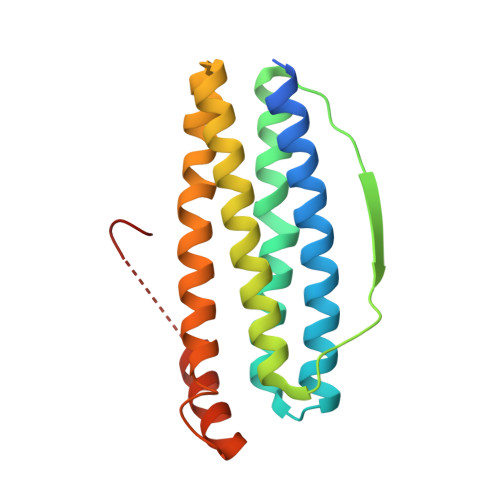Growth Process of Fe-O Nanoclusters with Different Sizes Biosynthesized by Protein Nanocages.
Wang, W., Xi, H., Fu, D., Ma, D., Gong, W., Zhao, Y., Li, X., Wu, L., Guo, Y., Zhao, G., Wang, H.(2024) J Am Chem Soc 146: 11657-11668
- PubMed: 38641862
- DOI: https://doi.org/10.1021/jacs.3c13830
- Primary Citation of Related Structures:
8W6M, 8W6Q, 8W6S, 8W6U, 8W6Y, 8W73, 8W74, 8W79, 8W7B, 8W7O, 8W7Q, 8W7T, 8W7U, 8W7V, 8WPT, 8WPV, 8WQU, 8WQV, 8WQX, 8WQY, 8WR0 - PubMed Abstract:
All protein-directed syntheses of metal nanoclusters (NCs) and nanoparticles (NPs) have attracted considerable attention because protein scaffolds provide a unique metal coordination environment and can adjust the shape and morphology of NCs and NPs. However, the detailed formation mechanisms of NCs or NPs directed by protein templates remain unclear. In this study, by taking advantage of the ferritin nanocage as a biotemplate to monitor the growth of Fe-O NCs as a function of time, we synthesized a series of iron NCs with different sizes and shapes and subsequently solved their corresponding three-dimensional atomic-scale structures by X-ray protein crystallography and cryo-electron microscopy. The time-dependent structure analyses revealed the growth process of these Fe-O NCs with the 4-fold channel of ferritin as nucleation sites. To our knowledge, the newly biosynthesized Fe 35 O 23 Glu 12 represents the largest Fe-O NCs with a definite atomic structure. This study contributes to our understanding of the formation mechanism of iron NCs and provides an effective method for metal NC synthesis.
Organizational Affiliation:
Key Laboratory of Chemical Biology and Molecular Engineering of the Education Ministry, Institute of Molecular Science, Shanxi University, Taiyuan 030006, China.















